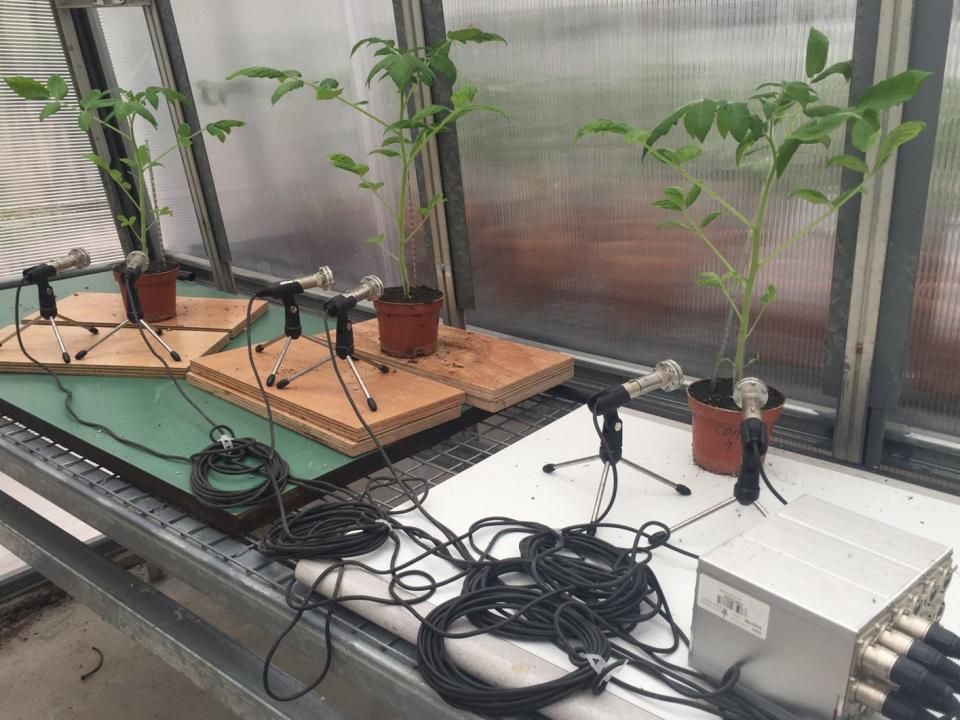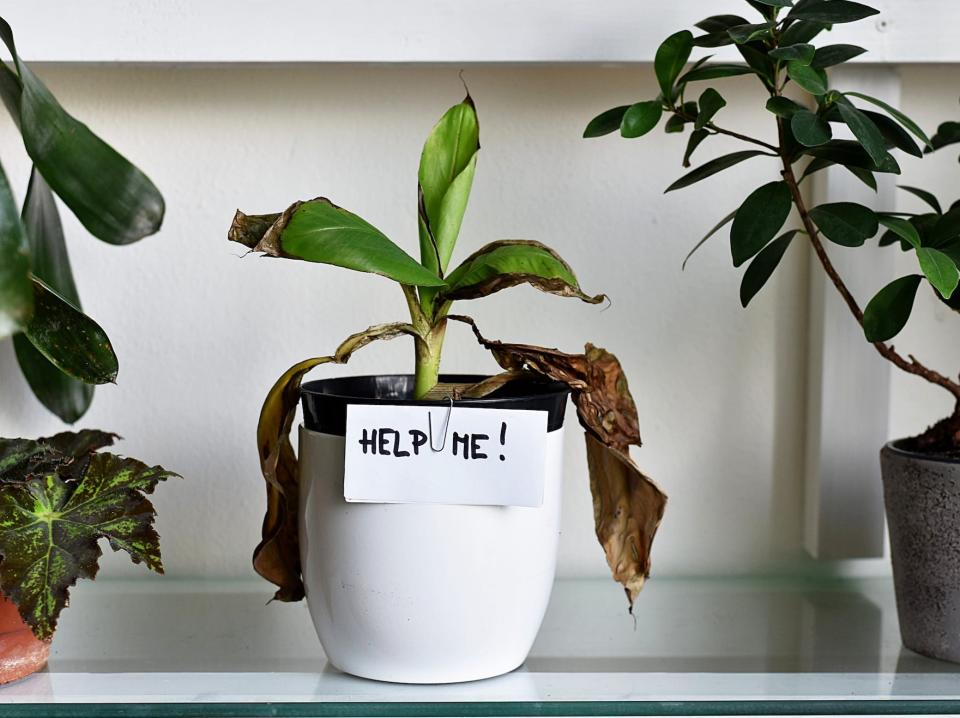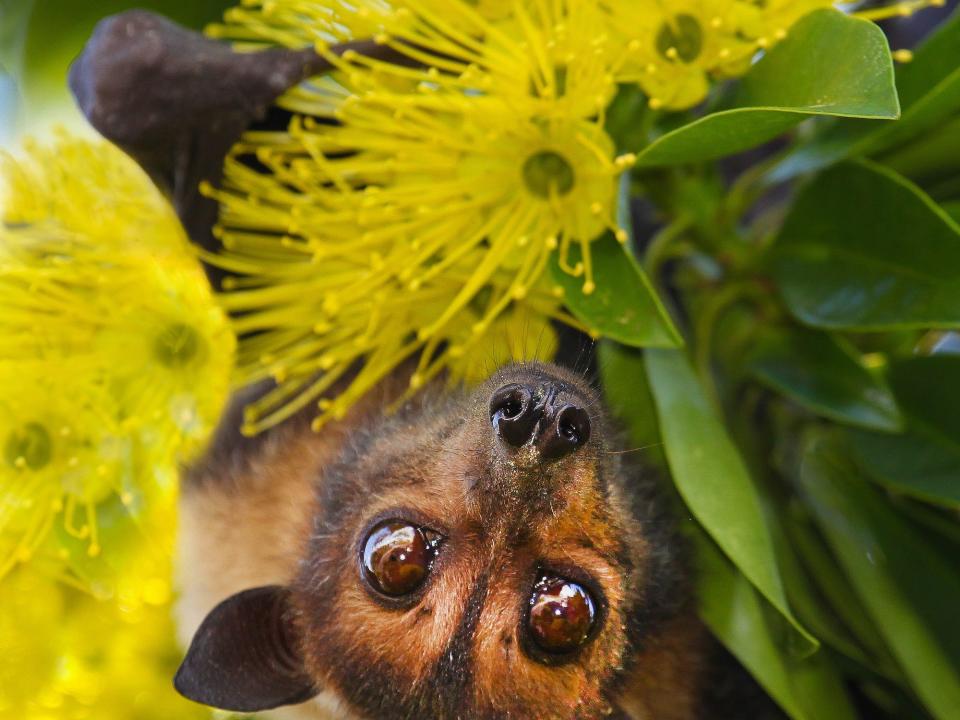Plants let out an ultrasonic scream when their leaves are cut or they don't get enough water

Plants make high-pitched noises that humans can't hear, a study found.
When they are stressed, infected, or cut, the plants start clicking frantically.
It may be that insects and other animals can hear and interpret these sounds.
Have you been ignoring your houseplants? They may be filling your house with deafening clicks, but these are too high for you to hear, scientists have found.
A study, published in the peer-reviewed journal Cell on Thursday, found that plants can emit high-pitched clicks when they are stressed by droughts, infections, or cuts.
These noises are at about the volume of a normal human conversation, but they are so high-pitched that we cannot hear them.
"Humans usually hear to 16 kilohertz. These sounds are mostly between 40 and 80 kilohertz," Lilach Hadany, senior author on the study and an evolutionary biologist and theoretician at Tel Aviv University, told Insider.
It's possible that these noises can help some animals — like bats, moths, and mice — get a sense of the condition of the plant and of the plant species, said Hadany.
Plants that aren't stressed are almost quiet

If the noises have been there all along, why are we just learning about them now?
"I think one thing was that you need to look for it," Hadany said, adding: "You need specific equipment like ultrasonic microphones to record the sounds."
Hadany, two students called Itzhak Khait and Ohad Lewin-Epstein, and other scientists from Tel Aviv University, MIT, and Harvard, found that tomatoes, tobacco, and cacti emit "very short ultrasonic clicks."
These were almost quiet when they were healthy. "They do less than one sound per hour on average," Hanady said.
But when they're stressed, "they make many more sounds— and this was both for cutting and for drought," she said.
This is what a plant would sound like if it made the noise in a human range.
It's not quite clear yet how the plants make these sounds, but the scientists suspect it is a passive process linked to cavitation. This is when plants that are stressed pop air bubbles in their circulation system causing vibrations in the plant.
"Our studies definitely suggest this direction," she said.
Different plants make different sounds

To test how much information is contained in these noises, the scientists recorded tomato, tobacco, and cactus plants when they were healthy or stressed with drought, infection, and cutting.
When they fed this library of sounds to a computer, the scientists found the machine was able to distinguish a stressed plant from a healthy plant. The computer was also able to distinguish the sounds from different types of stress, and even from different types of plants, said Hadany.
"We can separate between sounds emitted by tomato and tobacco, between tomato and cacti, and also between cut tomato and dry tomato a little bit dry tomato and very dry tomato," she said.
This might be very helpful for agriculture. For instance, tomato plants emit sounds of stress before they started looking dehydrated, Hadany said.
"I don't mean that it would come instead of visual monitoring of plants, but I'm thinking eventually that the combination of visual and acoustic monitoring can be stronger," she said.
Hadany said she and her colleagues wrote a patent to adjust irrigation using acoustic information.
We still don't know for sure if plants 'feel' pain

Though we may hear this information and feel compassion for the plants' pain, there is no definitive evidence to date that plants have "feelings" in the human sense of the term, Hadany said.
"I think we are not there yet," she said.
"We cannot say the plant feels stress and therefore makes sounds. It might be that the sounds are made completely passively, like a physical process," she said.
That being said, recent research has taught us much more about how plants get exchange information with their direct environment.
"We today know that plants get information from the environment and respond to this information. They are living organisms in the environment," she said.
"They communicate through volatiles, they communicate through shading, but we add this acoustic angle to this research," she said.
"This doesn't yet say anything about plant feeling," she said.
Animals — and perhaps even plants — may be able to hear the sounds

The other side of this equation is the animals in the environment.
"We know that certain animals are capable of hearing these sounds. For example some insects, like moths, bats, and mice, can hear these sounds," said Hadany.
"We still need to understand who is using this sound, what role does it play in the world, but it suggests many many possibilities," she said.
It's also possible plants themselves could react to these sounds, Hadany said. The same team found in a paper published in 2019 that plants can respond to the sounds of pollinators like bees.
"They respond within three minutes by making sweeter nectar," said Hadany
"So that brings the question: do other plants respond to the sounds of stress plants, which is really important information for nearby flora? We are currently testing it, but I hope to have an answer within a few years."
Read the original article on Business Insider

 Yahoo News
Yahoo News 
